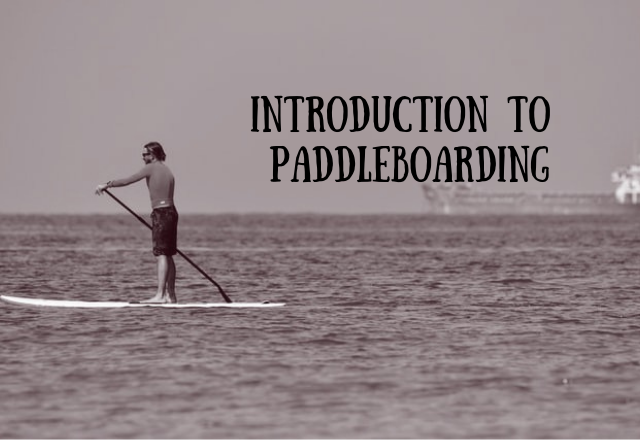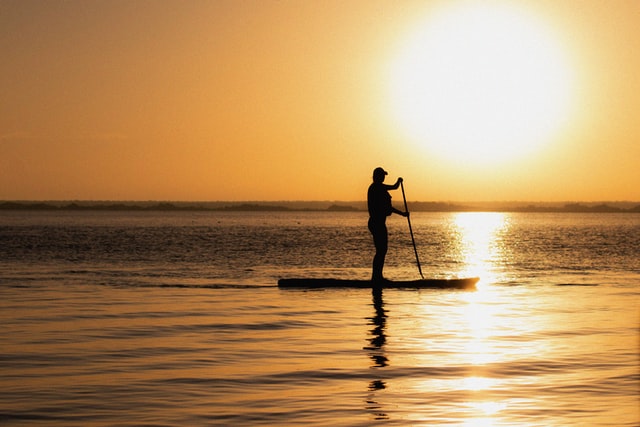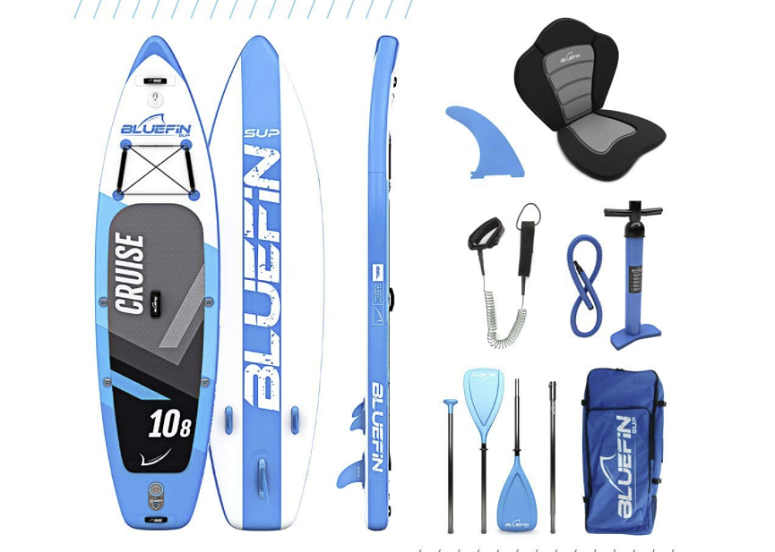Introduction to Paddleboarding

Paddleboarding is an Entertaining Family Friendly Way to Enjoy the Water
There are solid reasons for the recent boost in popularity of Stand up paddleboarding. Heading out on to the water on a paddleboard is a fantastic way to connect with nature – and gives you a full body workout too.
I advise caution when choosing the size for your first paddleboard.
Some are ideal for just one person, while others are able to fit much of the family including your dog! This guide to paddleboarding for the first time looks at the different types of boards available, how to paddleboard, the equipment you need, safety on a paddle board and the history of paddle boarding.
Beginner Boards: The Different Types of Paddleboard
Inflatable paddleboards are perfect for beginners. These are easy to transport as they can be rolled up into the size of a sleeping back (you won’t need a roof rack or a large garage to store it). These starter boards are super durable, as if you drop it, you won’t do any damage to it. Inflatable boards are perfect for the beginner as they are the easiest to handle in the water and the perfect platform on which to learn the basics.
As with all watersports equipment, the ‘no brand’ copies can be low quality. I recommend BlueFin SUP – this is the real deal. Best of all, if you do have an issue, BlueFin have excellent after sales service. Good luck with that if you opt for one of those brands which is a random collection of capital letters.
Specialist Boards for Experienced Users
As you progress and become proficient and skilled on a paddleboard you can then move on to more specialist boards, based on what you want to do. For example, surf stand up paddle boards are great for those who want to take on choppier waters. Touring stand-up paddleboards are for those who like the adventure and long distance.
These thinner and longer boards are ideal for the more skilled paddle boarder. There are even yoga paddle boards, perfect for tranquil lakes with a larger deck.

Basic Techniques of Paddleboarding
The first thing you need to do on a paddle board is to stand up. Start off in a kneeling position on the board in shallow water, before moving onto your feet, stabilizing yourself by having your hands on each side of the board. Stand up slowly by gradually extending your legs.
When in a standing position, ensure that your legs are parallel. Make sure your head and shoulders are upright, and that your knees are slightly bent (this will help you to maintain balance).
Everyone will fall off their paddleboard when learning. Getting wet is part of the learning curve!
If you do lose your balance, try and avoid falling onto the board and aim for the water (there is less chance of injury if you avoid the board when falling). Ideally you should try and hold onto your paddle when you fall. If you do get separated, get your board first, then paddle over with your arms to retrieve the paddle.
What Extra Equipment is Needed for Paddleboarding?
Having chosen your paddleboard, you need to choose an appropriate paddle. The ideal length of a paddle will see it reach the height of your wrists when your arms are extended above your head. Ideally, you’ll have a lightweight paddle, with the size of the paddle usually relative to the size of the paddler.
A leash can be handy as a paddleboarding beginner. This will tether the board to you and will keep it close if you should fall off. There are different leashes based on the type of water you will be taking to.

Safety Equipment
When paddleboarding, you will need to have a safety jacket or a personal flotation device. Adults won’t necessarily have to wear one at all times, but if you are taking children on the board, they will be required to wear one by all professional touring groups.
What you wear when boarding is climate appropriate. In the summer months, a swim suit or shorts might be perfect (obviously be mindful of the sun and the damage it can cause). If you are out on the water in colder conditions, a full wet suit or dry suit is the most appropriate attire. If you are out in areas which could be busy, a safety whistle and a light are advised.
Brief History of Paddleboarding
While gaining real popularity in only recent times, the paddleboard has been around for centuries. It started on the tropical Hawaiian Islands. The early islanders would traverse the waters on a paddleboard using them to travel and fish. There are also records that point to paddleboarding being a feature of ancient Egypt.
In recent times, boarding was used as a training technique for surfing and was very much linked to the waves. However, it quickly became apparent that there was much more to paddleboarding than just the waves and the activity spread around the world. The invention of the easily transportable inflatable boards has seen a real explosion in the sport – and it is sure to continue to grow.
Grab and Inflatable Board / Paddle Combo and Hit the Water
Whether you are enjoying the water yourself or looking for an activity to keep the family entertained. Paddleboarding is easy, cheap and safe.
Check out the quality boards from paddleboarding specialists BlueFin SUP now – over on this dedicated product page at amazon.co.uk – I’ll see you on the water!
More Family Friendly Sports:
